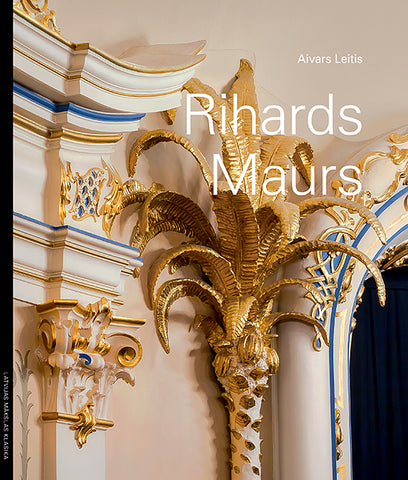
If you don't know the work of Rihards Maurs (1888–1966), then you definitely know his sleeping night watchman with a big bunch of keys in his hands on the wall of a house on Ausekļa street in Riga. True, the sculptor's art should be viewed not only by this delightfully cozy masterpiece. The master has left a lasting contribution to the history of Latvian sculpture and, as one of the most reliable artists of decorative sculpture, contributed to its progress and artistic diversity. Rihards Maur's sculpture is a serious and meaningful expression of the synthesis of art and design forms during the interwar period of the 20th century. During the Soviet occupation, Rihards Maur's name was not particularly mentioned in Latvia, because after the war the artist went abroad with his family.

The decisive importance in Rihards Maur's development path is the visit to the workshop of the famous master of the plastic decorations of the Riga buildings, August Foltz. After the time spent at the art school of the Society of German Craftsmen and in the workshop of August Folz (1903–1907), he began working in the architectural sculpture workshop of the Hungarian sculptor Ferdinand Vlašek in Riga (1907–1911), followed by studies in Germany. Returning to Latvia after the First World War, one of the first tasks is the image of Lāčplēš on the facade of the Saeima building (1922). Next comes the interior decoration of public buildings, where the artist's handwriting is dominated by decorative and external surface stylization, according to the chosen historical art style. A vivid example of this direction is the exterior and interior decoration of the Splendid Palace cinema building (1923), which was created with unusual luxury and a design imitating rococo stylistics, which surprises with the use of motifs and ornaments of the neo-style popular in Central Europe at that time. But in 1926, Hermanis Grīnbergs and Rihards Maur went to Tallinn, where a magnificent Art Deco-style cinema building, Gloria Palace, was built, which was the first large building in Tallinn's central Freedom Square (Vabaduse väljak). Gloria Palace's auditorium far surpasses Riga's Splendid Palace in terms of luxury. Rihards Maurs made several more interior finishes.

An important achievement of the sculptor is the extensive gallery of portraits of Latvian social and cultural workers. Works made in bronze, plaster, wood, copper forging, artificial stone and marble. The creation of the extensive collection of works in the portrait genre of cultural and social workers was started in 1920 with the Raina portrait tab. This was followed by the first bust of the President of the State Jānis Čakste, Krišjānis Barons, writers Vilis Plūdons, Rūdolfs Blaumanis, Reinis Kaudzīte, Rūdolfs Bērziņš, director Zeltmatis, actor Gustavs Žibalts and a portrait of artist Eduards Brencēns. After the Second World War, portraits of Jacob Seeberg, George Washington and Abraham Lincoln were made in Boston (USA).

However, the work of the sculptor in the urban environment deserves special attention - the block house at 3 Ausekļa street and its courtyard with sculptures, where one of the most valuable ensembles of decorative sculpture in Latvia was created in close synthesis with architecture; decoration of the courtyard of the rental house at Jāņa Asara Street 10 - the sculpture "Water Horse" (1930), as well as the creation of a fountain and a pool in the Archery Garden (Kronvalda Park). The lowest part of the park, made in a symmetrical layout, with a regular network of paths, is closed by a pool with a fountain, which became the dominant feature of the park in 1933, when it was supplemented by Rihards Maur's artificial stone sculptures "Sumpurnis", "Bārenīte" and "Mātesmeita".
Rihards Maurs also liked to work in memorial sculpture. Due to the materials used and vandals, the works of this genre have remained fragmentary.In the monograph prepared by art scholar Aivars Leiš for the LMK library series (Latvian and English), Rihards Maur's performance is comprehensively examined, reminding of forgotten values that are still relevant in Riga's urban environment.